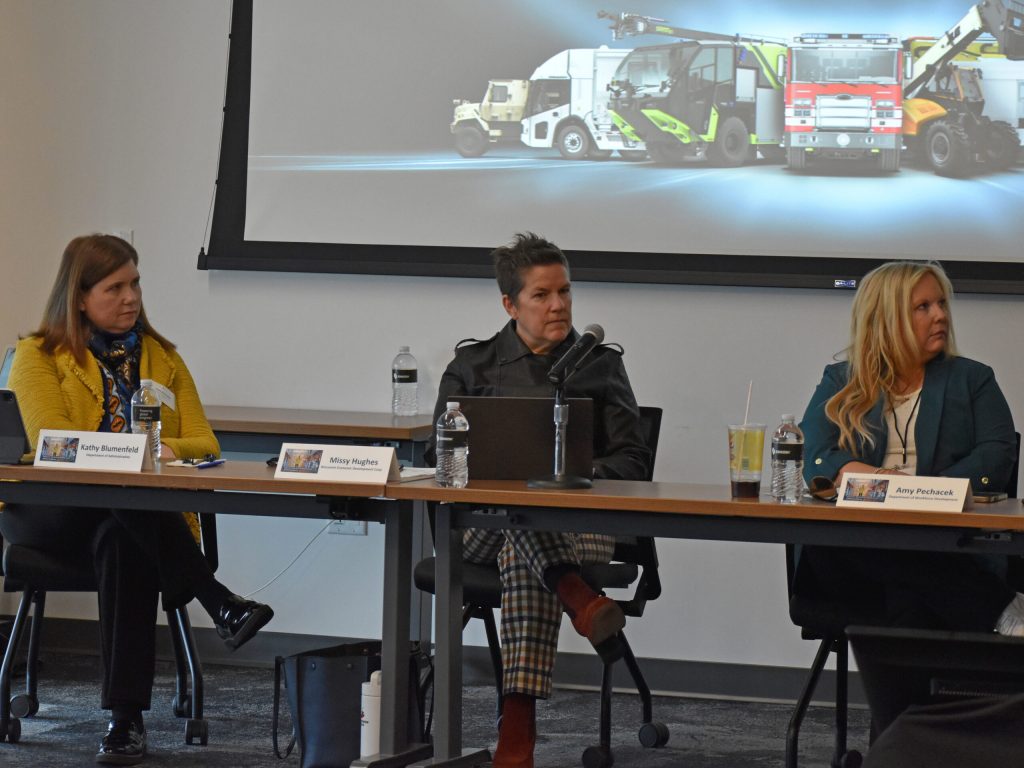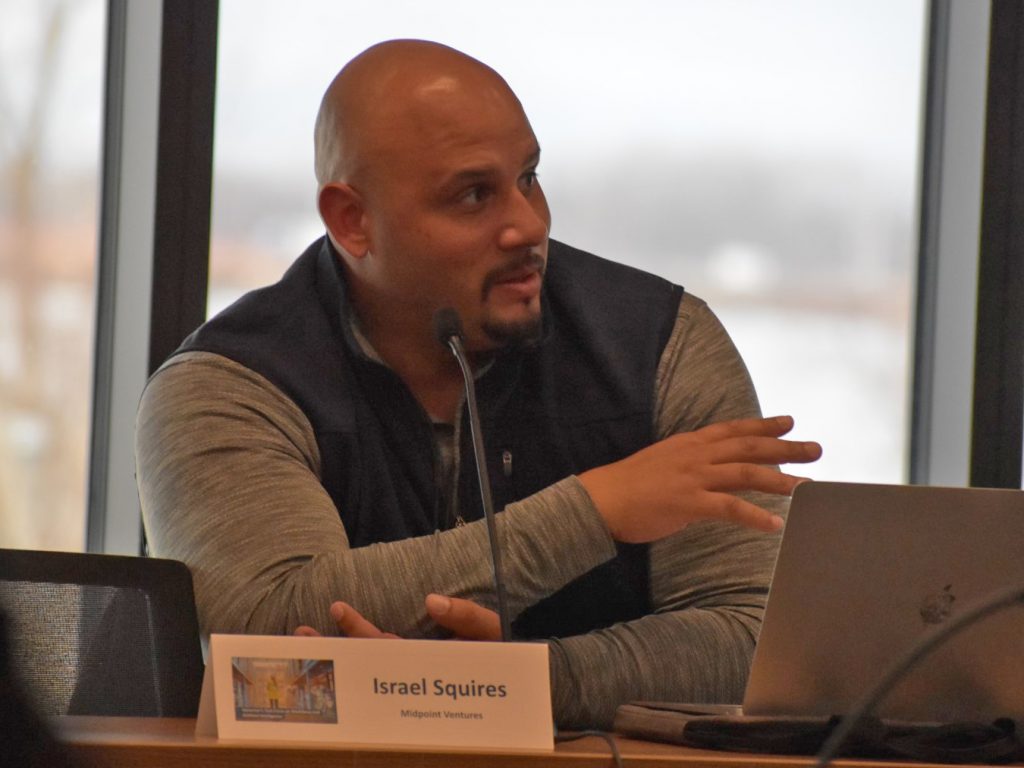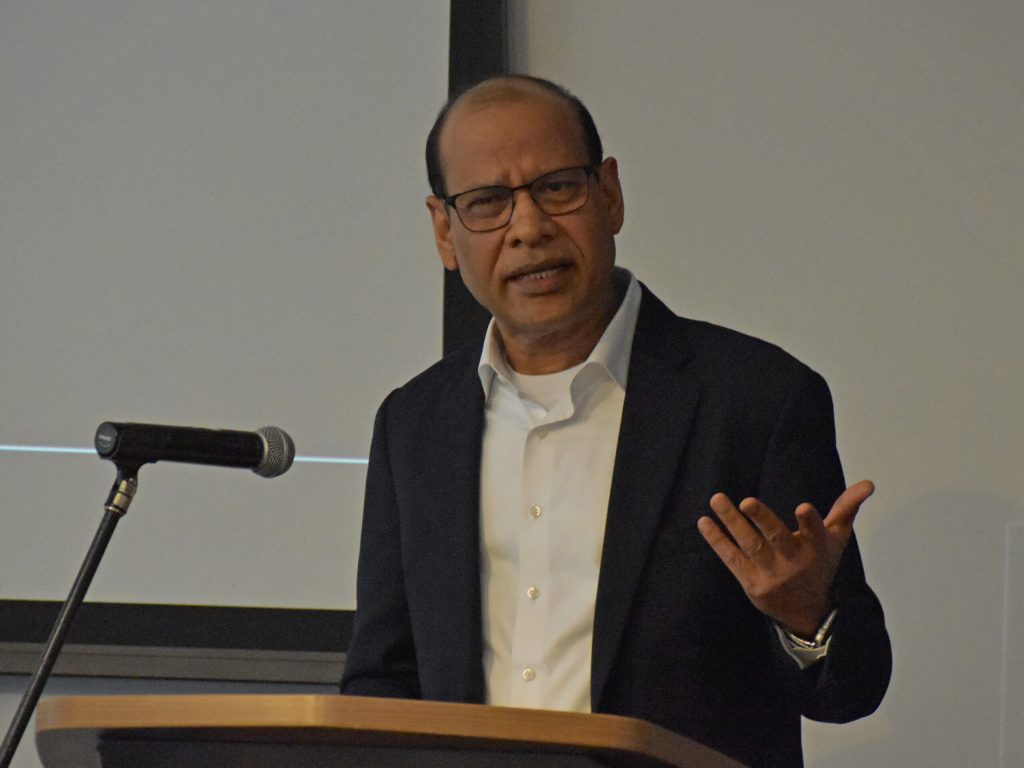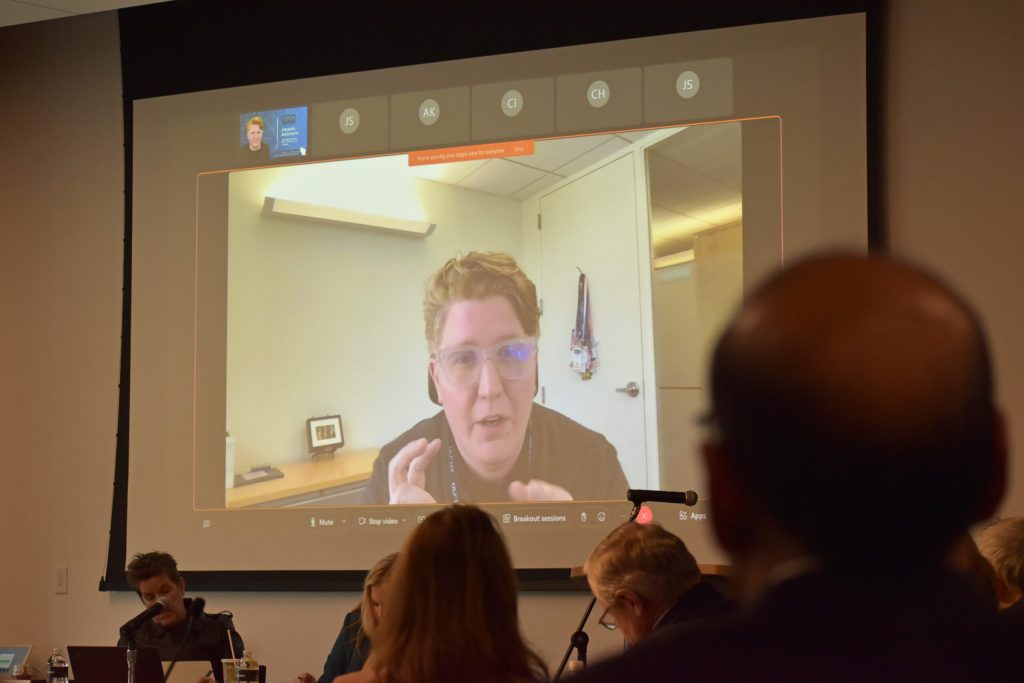State Officials Hear From Industry, Labor on Embracing AI
Goal to make changes without leaving workers behind, they tell governor's task force.

Listening to a presentation on artificial intelligence are, from left, Department of Administration Secretary Kathy Blumenfeld, Wisconsin Economic Development Corp. Secretary Missy Hughes and Department of Workforce Development Secretary Amy Pechacek. The Governor’s Task Force on Workforce and Artificial Intelligence met in Oshkosh on Monday, March 4, 2024. (Joe Schulz/WPR)
With growing advances in artificial intelligence, leaders of Wisconsin agencies are working to create a framework for embracing the technology while protecting workers.
The Governor’s Task Force on Workforce and Artificial Intelligence met in Oshkosh on Monday. The group included leaders of the state Department of Workforce Development, the Wisconsin Economic Development Corp. and the Department of Administration, as well as representatives from a local corporation and labor officials.
Pechacek said the group’s work is focused on having a “human-centered approach” to AI and ensuring workers are protected.
She called the rise of artificial intelligence the “fourth Industrial Revolution,” saying the technology is projected to affect every industry.
“What it takes to be a worker in the 21st century and beyond is going to be very different than what it looked like in the past,” Pechacek said. “Our goal here in the task force is to make sure that we are bringing everyone along as our economy changes, as our communities change and as work changes.”
She added that the task force’s recommendations will be included in Evers’ next two-year state budget proposal. She said the goal is to release the advisory plan this summer.

Task Force member Israel Squires, managing partner for Midpoint Ventures, asks a question during a meeting in Oshkosh on March 4, 2024. Joe Schulz/WPR
On Monday, the task force heard from Oshkosh Corp. Chief Information Officer Anupam Khare and AFL-CIO Technology Institute Executive Director Amanda Ballantyne.
Oshkosh Corp. is using AI to automate basic tasks like emails with suppliers and using predictive analytics to help guide corporate decision-making, Khare said.
“We’re conducting online training for our employees, we are running workshops for them and — through real life examples of problems being solved — our employees are understanding what are the areas where AI can assist and what areas they are good at,” he said. “I think this understanding is helping us to incorporate (an) AI-driven skills shifts in our workforce planning.”

Anupam Khare, senior vice president and chief information officer at Oshkosh Corp., speaks to the Governor’s Task Force on Workforce and Artificial Intelligence on Monday, March 4, 2024. Joe Schulz/WPR
Ballantyne with the AFL-CIO focused her comments on how government and industry can embrace AI in a way that doesn’t harm workers. She said the labor movement sees AI as both a potential and a challenge.
Ballantyne said including provisions related to artificial intelligence in collective bargaining contracts is one way to achieve that, pointing to AI provisions negotiated by the screen writers‘ and actors‘ unions.
She also said the AFL-CIO is advocating for more education and workforce development programs at the local level to help train workers on artificial intelligence, so they are not left behind in the transition.
“Otherwise, we will probably end up in a situation where new workers in the market are out-competing incumbent workers, and a lot of people get left behind in this transition,” she said. “It’s really thinking clearly about how labor and community organizations really partner with the workforce development and economic development systems to ensure that there’s a navigation system.”

Amanda Ballantyne, executive director of the AFL-CIO Technology Institute, speaks to the Governor’s Task Force on Workforce and Artificial Intelligence on Monday, March 4, 2024. Joe Schulz/WPR
Pechacek with DWD added that the state’s structural labor shortage — there’s been more job openings than job seekers since mid-2021 — could help prevent AI from creating mass worker displacement in the state.
She said the task force wants to ensure artificial intelligence augments workers without replacing them.
“We’re going to keep making those connections to make sure that we are prepared for the changes that AI is going to bring,” she said. “That includes making sure our students are prepared, our workers are prepared and our businesses are prepared to really adopt this technology so they can stay competitive, and Wisconsin can stay strong.”
State officials hear from industry, labor on embracing AI without leaving workers behind was originally published by Wisconsin Public Radio.
If you think stories like this are important, become a member of Urban Milwaukee and help support real, independent journalism. Plus you get some cool added benefits.



















